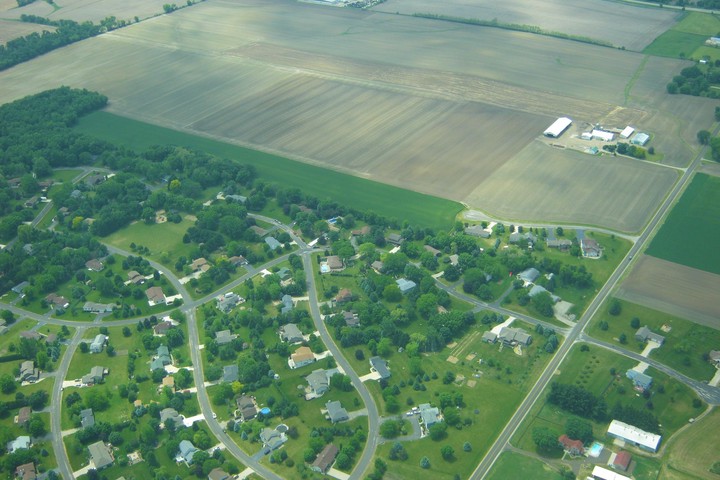Ecohydrology of land use change
 The urban-rural fringe in Dane County, Wisconsin
The urban-rural fringe in Dane County, Wisconsin
Humankind is the dominant current driver of global change, with over 75% of Earth’s ice-free land altered by humans in some way ( Ellis et al., 2007).
Ongoing work in this area focuses on the interface between hydrological, agricultural, and social resilience using the Kansas River Corridor as a case study.
Key past findings:
- The urban heat island significantly increases urban vegetation’s growing season length ( Zipper et al., 2016) and water requirements ( Zipper et al., 2017).
- The impacts of urban water conservation can cascade ‘upward’ to the watershed scale by altering streamflow patterns upstream and downstream of the city, and ‘downward’ to sub-municipal scales due to diverse water conservation behavior shaped by socio-economic conditions ( Breyer et al., 2018).
- Land use change associated with the downfall of the Soviet Union and formation of the European Union significantly altered drought and extreme heat across Europe via changes to the water and energy balance ( Zipper et al., 2019).